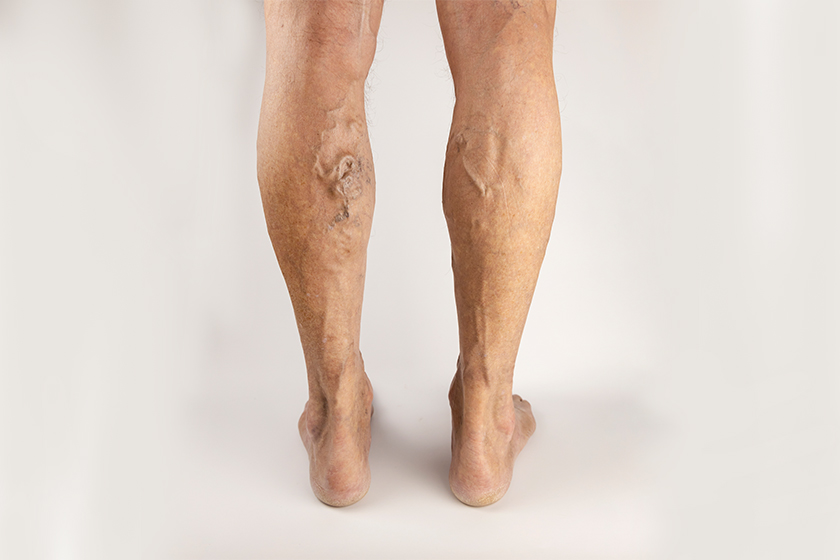
Comprehensive Guide to Treating Vascular Malformations
Vascular malformations are often rare and complex anomalies that can significantly impact an individual’s life, with some types found in less than 1 percent of the population. Dr. Sumit Kapadia, a renowned vascular surgeon, brings forth his extensive knowledge and experience to demystify the meaning of malformation, its implications, and the diverse treatment options available.
Vascular malformations usually develop congenitally, implying they form before birth, and many don’t manifest symptoms until triggered by adolescence, pregnancy, major surgery, trauma, or injury. These malformations are the outcome of abnormal growth and development of vascular vessels, either singularly or in combination, and can range from harmless and minor to severe and potentially life-threatening. Depending on the type(s) of vessel involved, over time, malformations can grow larger and become problematic.
What is Vascular Malformation?
A vascular malformation is a broad term encompassing congenital vascular anomalies that could involve only veins, termed as venous malformation (VM); only lymph vessels, known as lymphatic malformations (LM); both veins and lymph vessels, referred to as venolymphatic malformations (VLM); or instances where arteries are connected directly to veins without any capillaries in between, called arteriovenous malformation (AVM).
Until recently, the lexicon to describe these vascular anomalies was inadequate and imprecise, leading to miscommunication among medical experts and patients. Many individuals often find themselves visiting multiple doctors in pursuit of an accurate diagnosis. Although there has been significant advancement in understanding vascular malformations and the terminology used to describe them, achieving an accurate diagnosis remains a crucial step in managing these conditions. Sometimes these are often mistakenly called as hemangiomas ( infantile hemangiomas which are vascular tumors which rapidly increase in size in infants and then can reduce or regress by the age of 5 to 7 years).
Dr Sumit Kapadia endeavours to provide a comprehensive guide on vascular malformations, addressing their causes, the potential dangers they pose, and the treatment options available, thus empowering the general masses in India with crucial knowledge and clarifying any misconceptions surrounding vascular malformations. By intertwining his authoritative tone and expert insights, this guide aims to enlighten individuals about the complexities of vascular malformations and the path forward to manage them effectively.
Vascular Malformation Causes
Vascular malformations are congenital, meaning they are present from birth, occurring due to errors in vascular development during embryogenesis. Here’s a detailed look into the causes:
1. Genetic Mutations:
Genetic anomalies and mutations play a crucial role in the formation of vascular malformations. These mutations often impact the formation and development of blood and lymphatic vessels, leading to abnormalities in their structure and function.
2. Abnormal Blood Flow:
In some cases, abnormal blood flow and connections between blood vessels (such as arteriovenous malformations) can lead to vascular malformations. These can disrupt normal blood flow and pressure, causing complications and symptoms.
3. External Triggers:
While vascular malformations are congenital, certain external triggers such as trauma, surgery, or hormonal changes during adolescence and pregnancy can exacerbate or reveal previously asymptomatic malformations.
4. Lack of Capillaries:
The absence of capillaries between arteries and veins in arteriovenous malformations can lead to high-pressure blood flow directly into the veins, causing complications and increasing the risk of rupture.
Dr Sumit Kapadia emphasises that understanding these causes is crucial in devising effective treatment plans for vascular malformations, enabling medical practitioners to address the underlying issues and manage symptoms more effectively.
Is Vascular Malformation Dangerous?
The danger posed by vascular malformations largely depends on their type, location, and size. Dr Sumit Kapadia elaborates on the potential dangers of vascular malformations:
Also Read: What is a Vascular & Endovascular Surgeon?
1. Life-threatening Complications:
Vascular malformations can be dangerous due to the risk of severe bleeding or rupture, especially in the case of arteriovenous malformations, leading to life-threatening complications and requiring immediate medical intervention. This is especially of concern in case the location is in face or neck.
2. Pain and Discomfort:
Many vascular malformations, particularly venous malformations, can cause significant pain and discomfort, impacting the quality of life of the affected individuals. Sometimes, deep-seated location can cause entrapment or compression of nerves leading to severe pain.
3. Functional Impairments:
Depending on their location, vascular malformations can lead to functional impairments. For instance, malformations near joints may hinder movement, while those in the airway can affect breathing.
4. Cosmetic Concerns:
Visible malformations can also pose cosmetic concerns, potentially leading to psychological distress and impacting an individual’s self-esteem and social interactions.
5. Systemic Complications:
Certain extensive and complex vascular malformations can cause systemic complications, impacting multiple organs and systems and posing significant health risks.
Dr. Kapadia underlines that while some vascular malformations might not pose immediate dangers and may remain asymptomatic, timely diagnosis and management are crucial to prevent potential complications and improve the quality of life for those affected.
In conclusion, a thorough understanding of the causes and potential dangers of vascular malformations is crucial. Dr Sumit Kapadia’s expertise sheds light on the complexities of these conditions, aiming to educate and guide individuals towards proper diagnosis and treatment, thereby addressing both the physical and psychological aspects of living with vascular malformations.
Vascular Malformations Treatment
Treating vascular malformations requires a tailored approach, balancing efficacy and patient safety. The classification of vascular malformations is pivotal to determining the apt treatment strategy.
Capillary Malformations
These are often visible on the skin surface as reddish patches and usually require no treatment unless cosmetic considerations dictate otherwise. Sometimes oral antiproliferative medicines may be used to reduce these Capillary Malformations.
Venous Malformations
These are treated with sclerotherapy, compressions, or surgical interventions, depending on the malformation’s severity and location. Some localized intramuscular venous malformations can also be removed completely by open surgery.
Lymphatic Malformations
Treatment may involve sclerotherapy, surgery, or medical management to control symptoms.
Arteriovenous Malformations (AVMs)
AVMs are complex and demand intricate interventions like angio embolization or surgical excision, often involving multidisciplinary teams to address the associated risks effectively. Many patients would need multiple sessions of treatment.
Vascular Malformation Surgery
When conservative treatments are ineffective, vascular malformation surgery becomes a viable option. Dr Sumit Kapadia meticulously evaluates the pros and cons, ensuring the surgery’s benefits outweigh the risks. He adopts state-of-the-art surgical techniques to optimise patient outcomes and minimise recovery times.
Non-Surgical Treatments
For those for whom surgery is not an ideal solution, non-surgical treatments such as laser therapy, sclerotherapy, and medication management serve as alternative strategies to alleviate symptoms and improve the quality of life.
Conclusion
Vascular malformations, with their diverse manifestations and implications, necessitate a thorough understanding and an individualized, comprehensive treatment approach. Dr. Sumit Kapadia emphasises the importance of timely intervention, robust patient education, and advanced treatment modalities to address vascular malformations effectively.
Knowledge is paramount in the journey of managing and treating vascular malformations. It empowers individuals to make informed decisions and cope with the condition confidently. This article aims to serve as a beacon of knowledge and guidance for those grappling with vascular malformations, illuminating the path towards optimal health and well-being.
Follow us on YouTube

MBBS, MS, MRCS, DNB-Fellow
Dr. Sumit Kapadia
Dr. Sumit Kapadia / MR KAPADIA SUMIT a gold-medalist from Baroda Medical College, obtained his general surgical training and senior residency from SSG Hospital, Vadodara.




